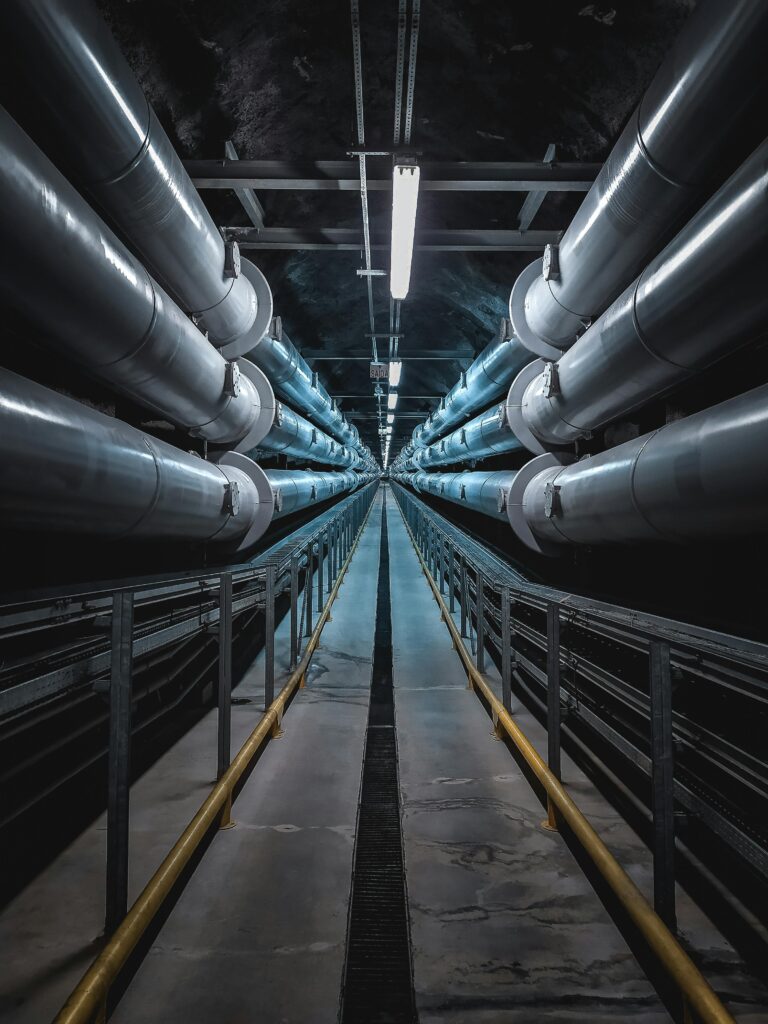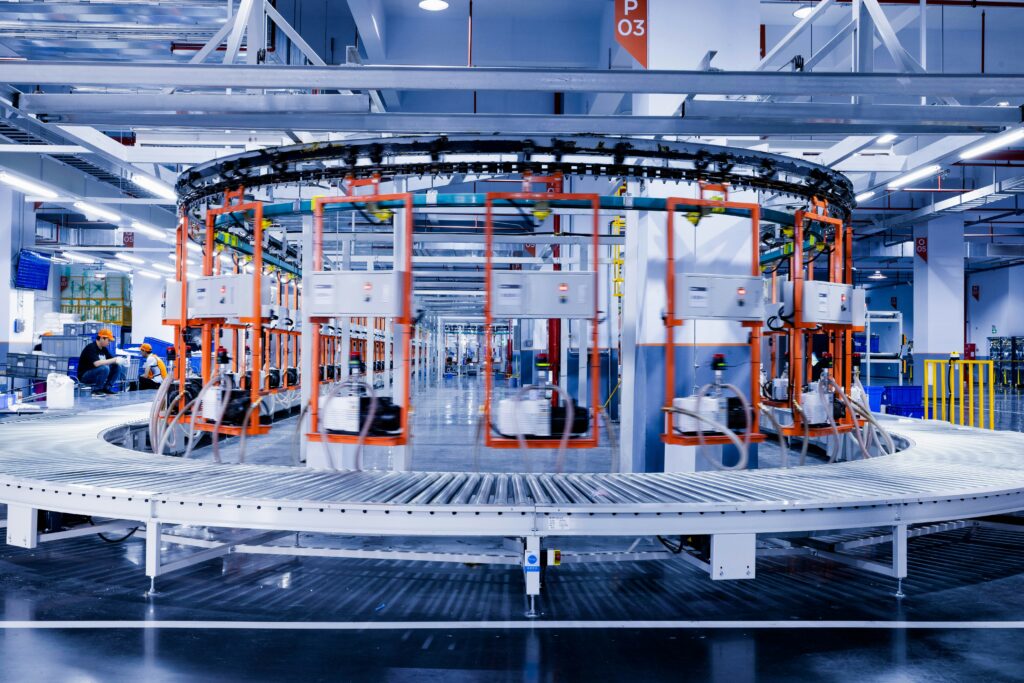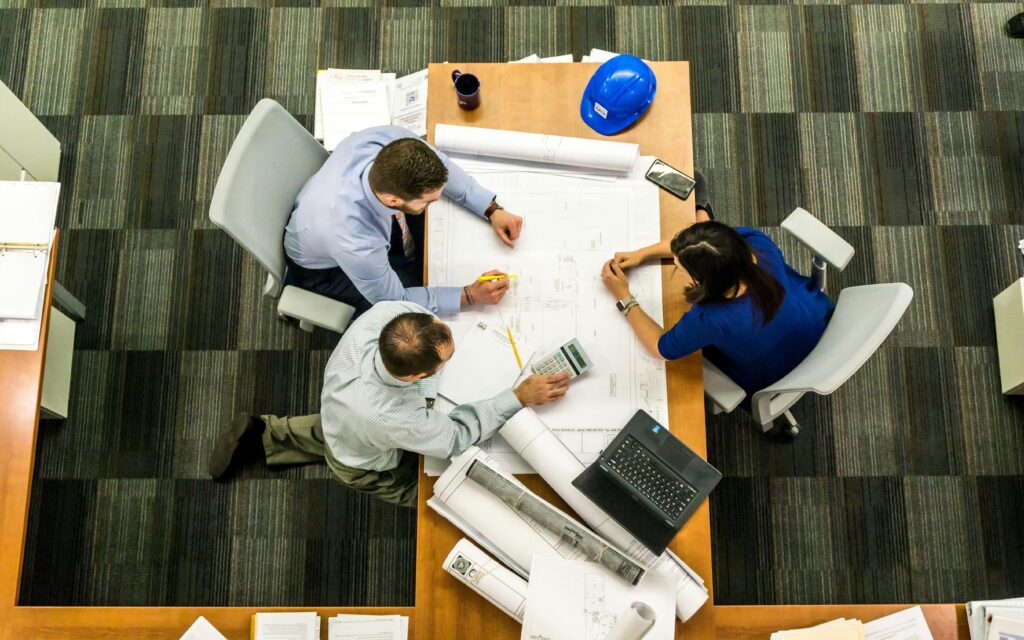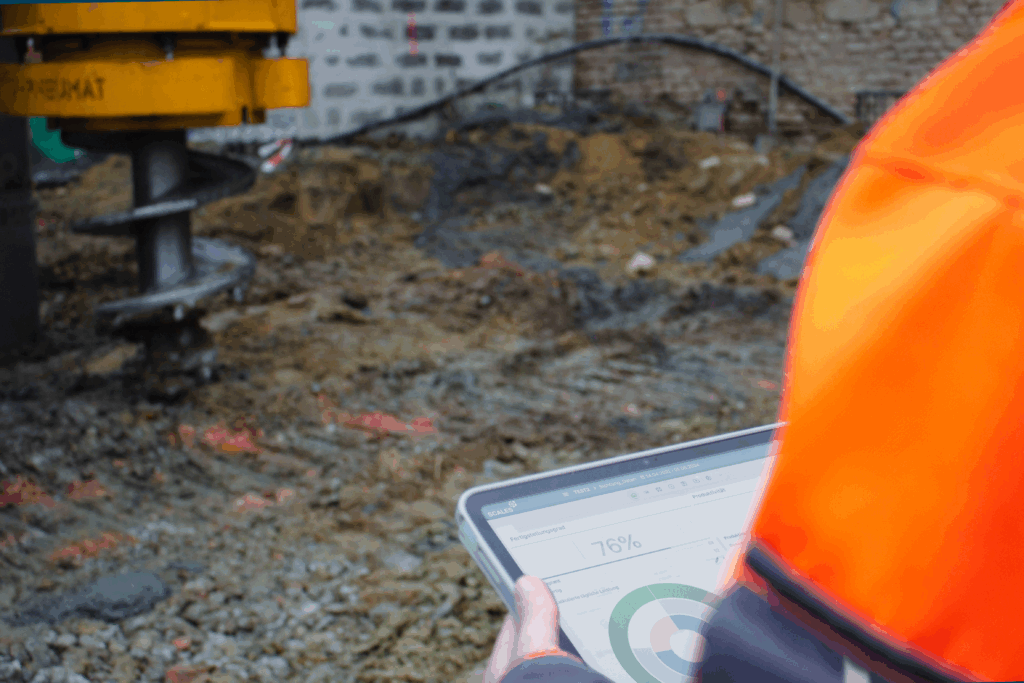WHEN DIGITALISATION HITS A ROADBLOCK
Digitalisation on-site isn’t some distant trend. It’s happening now. Yet while robots map the terrain, AI crunches the numbers, and dashboards could overflow with live data, many construction sites still operate the old way. Why is that?

The obvious culprit? People.
“They just don’t want to!” you hear whenever a digital initiative stalls. Blame quickly falls on the front-line crews: too set in their ways, too old, not tech-savvy enough. But look closer, and another picture emerges. One that’s far more complex and, above all, human.
Anyone who actually speaks with the teams quickly realises that the stereotype of the tech-averse construction worker just doesn’t hold up. On-site and in his role teaching VÖBU’s drilling-master course, Philipp Maroschek meets these front-line workers again and again—and what stands out is their genuine interest and motivation. The real obstacles are found elsewhere.
“Our drilling-master attendees and candidates are genuinely interested in digitalisation. Like all of us, they’re curious and ready to go digital on-site. Our seminars focus on both the opportunities and the challenges of digitalisation. What’s particularly fascinating is that projects so often falter over interpersonal issues rather than technology. How we interact—and how we show appreciation—is critical. I’ve heard stories that hit me personally, especially where technology has been misused or underused.”
Philipp Maroschek / Managing Director eguana

A Broader Perspective on What’s Next
Beyond the drilling-master course, Philipp gathered insights from the VÖBU series “Young Talents in Specialist Civil Engineering”—from up-and-coming talent to industry veterans.
“Digitalisation has reached specialist civil and tunnel engineering, bringing fresh, often interpersonal, challenges. It’s vital we discuss not only the tech’s possibilities but also its pitfalls—admit mistakes, share problems, and work together. Exchanging diverse perspectives on digitalisation builds understanding across the sector…and it’s all about collaboration. At both the drilling course and the seminar, it was inspiring to see discussions breaking down company and departmental silos to forge real connections.“
Philipp Maroschek
Specialist Civil Engineering Isn’t a Production Line
Digitalisation thrives in industries with repeatable, controllable processes—think automotive or electronics manufacturing. Less so on a construction site.
A specialist civil-engineering project is a highly complex, ever-changing system: unpredictable geology, shifting weather, rotating teams, tight schedules, and strict safety standards. Here, digital solutions aren’t “plug & play.” They’re a toolbox that must be applied with finesse and deep context.

Between Wi-Fi and Respect
Many digital initiatives start with enthusiasm, only to fall short of expectations.
Because what good is a powerful data-management system if there’s no data in it?
And it’s the on-site crews who make or break data quality. Yet failure rarely stems from lack of skill. The reasons are both simple and complex.
The good news? These problems are solvable. But first, let’s look at three ways not to do it—and from there, the best practices practically write themselves.

1. The Comfortable Office
At last, you think, we’re digital! The site manager, cool in his air-conditioned cabin, monitors every machine and KPI. Spot a discrepancy? He radios or phones the crew on the spot—super efficient!
But out in the field, the crew feels monitored, not supported.
“They’re watching our every move,” they grumble. “And if the machine stops, he calls me immediately—he won’t even walk out here to see for himself.”
Result: frustration.
“He asks why I’ve only drilled X metres, but he has no clue about the job I’m doing.”
And suddenly, digitalisation is perceived as surveillance instead of assistance.
Human contact and trust are replaced by remote control which results in resentment. Sometimes even sabotage: a jacket flung over the camera, or “Wi-Fi issues” because the helmet sits on the antenna—rarely out of malice, more out of disillusionment with a system that renders people invisible.
Digital tools can either connect us or cut us off. The difference lies in approach. We must put people—our colleagues—first. Technology should free up time for real collaboration, not erect new barriers.
2. The Crew Can’t Handle It
The new system goes live, the dashboard is set up— but somehow it never fills with data. No machine data, no new reports. The site manager clicks around in disappointment: “Figures…they just can’t handle this stuff.”
Meanwhile, the operator faces a tablet they’ve never used. What if they make a mistake? Better not risk it.
And so, reluctance takes root. Missing or incorrect entries rarely reflect stubbornness. More often, they stem from confusion: opaque systems, pointless processes, and supervisors who never ask, “Do you understand why this matters?”

If you don’t know why you’re doing something, you won’t do it enthusiastically.
Digitalisation is not a one-way street. It demands training, dialogue, and, above all, respect.
“If you truly want digitalisation, you must invest. And not just in tablets, Wi-Fi, and software, but in time for communication, explanation, and support. On equal footing. This is a change to established, lived processes, and everyone must pull together. It’s teamwork.”
Philipp Maroschek

3. " I’m the Boss"
A short visit to the construction site- The boss shows up, nods approvingly, and announces:
“We’re digital now—great new system, very intuitive. From today, everything goes in digitally.”Then back to the car. But just in case, paper logs continue—because, you know, “you never know.”
In the office, everyone’s convinced the new system is in place—after all, we spent good money on it. Questions? The manual’s there. Or click around, figure it out.
Problem is, nobody wants to be the first to stumble. Without training, dedicated support, or time to experiment, most people do nothing, because they’d rather be safe than sorry. And when digital and paper run side by side, the well-learned paper wins every time.
It’s not about ill will—it’s insecurity. If you genuinely want digitalisation to succeed, you must build trust, and that starts with leadership. Anyone using new tools needs clear explanations, steadfast support, and the assurance that asking questions is not just allowed, but encouraged.
Until leadership treats digitalisation as more than a “tool install,” people remain sidelined. Yet it’s about them. It’s about understanding, purpose, and the reassurance that mistakes are fine if we learn together.
“You must explain to the crew why we’re going digital, what we expect from it, and how it benefits both the company and its people. Involve them in designing and shaping the digital ecosystem—let them have a say.”
Philipp Maroschek
Digitalisation won’t run on autopilot. It’s a shared journey that begins not with a software update, but with a conversation.

The Solution: A Better Connection
What we need isn’t more tech—it’s more connection.
„We don’t need more data; we need more human connection. Digital tools should help us reclaim time for what matters: collaboration and teamwork on-site. They shouldn’t get in the way or add extra work; they should clear the path.”
If your team thinks you’re just hiding in a cool office, barking orders over the radio, building trust is an uphill battle. Yet they rarely see the hours you spend chasing missing data, correcting errors, or juggling five spreadsheets because nothing lines up.

Imagine getting that time back—not by doing less, but by having your team feed reliable, well-documented data into the system. The payoff? Less stress, less chaos, less rework—and more time to focus on what truly matters: the people on your site. Those standing in 30 °C heat or sealing trenches in the rain at night.
In short: your team can free up your time with digital workflows. And you can use that time to give back—to your team.
There’s one guiding principle: Respect is not optional.
True Digital Leadership starts with analog leadership. Get out there. See the work up close. Learn your team’s names. Greet them with a handshake and genuine appreciation. Ask about their kids. Bring water when it’s hot. Say “Thanks for the care you put into this job.”
Small gestures, huge impact.
Digitalisation That Nobody Wants Achieves Nothing
Technology can boost productivity, quality, and make work better for everybody—but only if people are on board. Explain the benefits. Listen when they say, “This isn’t working.”
Digitalisation can make construction more efficient—and more human—if we’re willing to embrace both.

